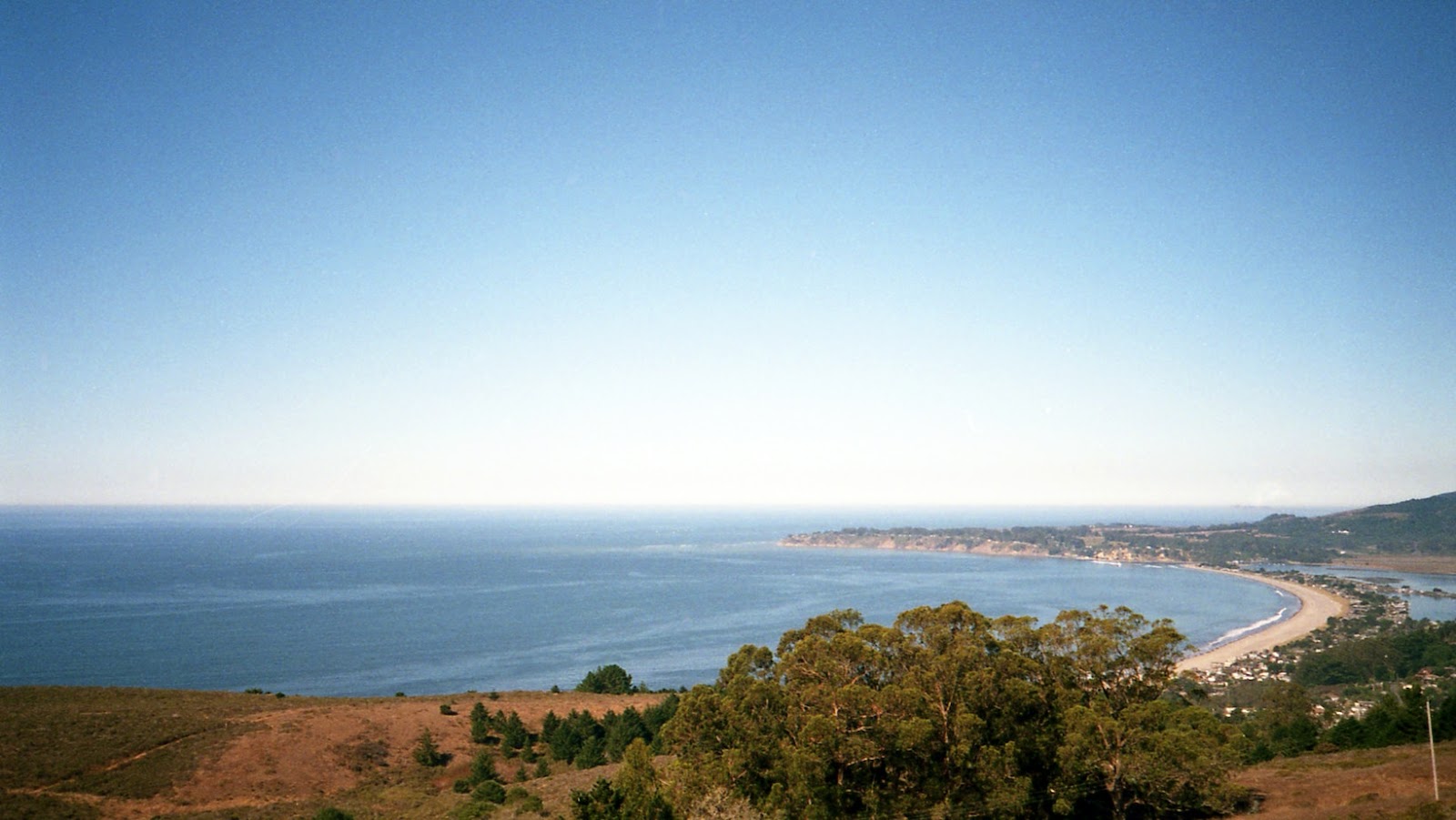How Far is Lake Tahoe From San Francisco
To make the most of your drive from San Francisco to Lake Tahoe with the three sub-sections: researching driving routes, choosing the best time to travel, and preparing your vehicle for the drive. These steps will help ensure that your drive is smooth, safe, and enjoyable.
Researching Driving Routes
When it comes to charting the course for your journey from San Francisco to Lake Tahoe, exploring various driving routes is an essential part of the planning process. By researching different options, you can choose a route that best suits your preferences and schedule, allowing you to enjoy the journey as much as the destination.
- Start by utilizing online tools and maps to explore potential routes, taking into account factors such as distance, scenery, and traffic patterns.
- Consulting with local experts or fellow travelers can also provide valuable insights into the pros and cons of different driving pathways
- Finally, consider any unique points of interest along each route that may align with your trip’s goals and interests.
It’s also crucial to note that certain times of year or weather conditions may impact your driving choices. For example, traveling during a snowy season may require a more cautious approach while navigating mountainous roads.
While researching routes is an essential aspect of planning your road trip from San Francisco to Lake Tahoe, keep in mind that plans can always change. Flexibility and adaptability are vital components of any successful travel experience.
Interestingly enough, Lake Tahoe was originally named “Lake Bonpland” after French explorer Aime Bonpland in 1844. However, this name was eventually replaced with its current moniker in honor of local indigenous groups who inhabited the area prior to European settlement.
Why worry about traffic when you can have a scenic drive with snow-capped trees and picturesque lakes? Choose winter and enjoy the beauty of an icy road trip to Lake Tahoe.
Choosing The Best Time to travel
The ideal time to plan your drive from San Francisco to Lake Tahoe is during the fall or spring seasons. The winter season can make driving challenging due to the accumulation of snow and harsh weather conditions, while the summer season may cause heavy traffic on the route. To avoid congestion, plan your trip on weekdays instead of weekends.
It is also advisable to check the weather forecast before embarking on your journey and keep snow chains handy in case of unexpected snowfall. Pack enough warm clothes and essentials if you are planning a winter trip as the temperatures can get extremely low.
Additionally, Highway 50 is renowned for spectacular scenic views but can be treacherous during winters. If you are an inexperienced driver or have never driven on mountain roads before, consider taking alternate routes like I-80.
Pro Tip: Check for road closures along your route beforehand to avoid any unnecessary detours or delays during your trip.
Make sure your car is as prepared as you are for this drive…unless you enjoy being the only one stranded on the side of the road.
Preparing Your Vehicle For The Drive
Protecting your vehicle for the journey
It’s essential to ensure that your vehicle is ready for the San Francisco-Lake Tahoe drive. Failing to protect it from potential damage or malfunction can result in danger, wasting time and money. Here’s a guide on how to get your car ready professionally.
- Verify Your Car Maintenance: Check your car’s engine oil, brake fluid, transmission fluid, power steering fluid levels and refill if necessary.
- Inspect your Tires: Ensure each tire has enough air pressure; check treads; Fill-up spare tire with air.
- Test Your Brakes: Make sure they are working correctly and are not defective or displaying warning signs like screeching noises.
- Clean Your Air Filter: A dirty filter can negatively affect fuel efficiency and cause harm to the engine over time.
- Pack Essential Tools & Documents: Carry a toolkit, an extra key, license, registration & insurance documents.
Make sure you have emergency roadside assistance coverage like AAA plus/ premier subscription. They can come to rescue efforts immediately if there’s any breakdown.
Don’t ignore the severe impact that altitude change can have on fuel combustion systems while moving towards Lake Tahoe.
Here are some useful suggestions:
- Refuel Before Taking Off To The Mountains To Avoid Running Out Of Fuel In Serviceless Areas
- Use low gear instead of applying brakes before straight descending because it may overheat brakes
- Take breaks often and let the vehicle cool down before continuing if you happen to notice any temperature gauges spiking rapidly
Who needs a fancy car when you can stay comfortable on a long drive with just a pillow and a Snuggie?

Staying Comfortable on The Long Drive
To prepare for a comfortable driving experience from San Francisco to Lake Tahoe, you need to ensure you have the right clothing, snacks, and pit stops. Pack appropriate clothing, bring snacks and drinks, and plan for pit stops along the way. These three sub-sections will help you stay comfortable during the long drive.
Packing Appropriate Clothing
To ensure a comfortable long drive, it is crucial to pack the right clothes. Dressing appropriately for the weather and road conditions can make all the difference in your journey’s comfort level. Below are some crucial points to consider when packing clothing for a long car journey.
- Wear comfortable, breathable clothes that enable freedom of movement.
- Pack layers for fluctuating temperatures and sudden weather changes.
- Avoid materials that wrinkle or cling uncomfortably in confined spaces.
- Choose closed-toe shoes with a good grip for driving and rest stops.
It’s also worth considering any specific activities you may engage in en route, such as hiking or exploring towns along the way. Bringing appropriate attire for these activities can add extra comfort and enjoyment to your trip.
Did you know that wearing tight clothing while driving for extended periods increases fatigue? According to the National Highway Traffic Safety Administration (NHTSA), loose-fitting clothes can help avoid physical discomfort and maintain alertness on long drives.
Stock up on snacks and drinks, because the only thing worse than a long drive is a long drive on an empty stomach.
Bringing Snacks And Drinks
One way to ensure a comfortable journey on a long drive is by bringing along snacks and drinks. Here are some tips to keep in mind:
- Choose healthy snacks, such as fruits and nuts, to keep yourself energized and full.
- Pack easy-to-eat foods like sandwiches or protein bars for a quick bite on the go.
- Don’t forget to bring plenty of water to stay hydrated throughout the drive.
- Avoid messy or greasy foods that can leave stains or spills in the car.
- Consider packing a small cooler with ice packs to keep your drinks and perishable snacks fresh.
It’s worth noting that bringing sufficient quantities of food and drink can help avoid unnecessary stops along the way, saving you time and money without compromising on nutrition.
Keep yourself fueled up by following these key tips for selecting snacks and drinks before embarking on your long drive. Don’t let hunger distract you from your driving – make sure to pack enough snacks for the road!
Stopping for a bathroom break isn’t just necessary, it’s a chance to stretch your legs and remind yourself why you’re not taking a hot air balloon instead.

Making Pit Stops Along The Way
Rest breaks for a smooth journey are essential. Taking frequent intervals while on long drives helps in avoiding fatigue or physical discomfort. Breaks help elevate energy levels and keep the driver fresh, preventing accidents. It is vital to understand one’s body needs to plan rest timings accordingly.
Stopping every two hours can aid the driver’s wellbeing and reduce various risks associated with driving. These stops may include light stretching exercises, short walks or even quick snacks to be consumed on-the-go. Furthermore, performing specific stretches before getting back behind the wheel helps avoid stiffness and keeps muscles relaxed.
Besides taking regular rest breaks, it is necessary also to stay hydrated throughout the journey. Drinking vast amounts of water not only maintains one’s fluid balance but also prevents skin dryness and headaches caused due to minimal water intake.
Once I ignored all rest recommendations during my long drive from California to Texas. Eventually feeling exhausted, I pulled over during lunchtime at a roadside cafe where I saw people energized after their relaxing break. That day I learned the importance of resting amidst long drives for a safer experience.
Who needs an expensive GPS system when you can just follow the beautiful scenery and hope for the best?

Enjoying The Scenic Route
To make the most of your drive from San Francisco to Lake Tahoe, maximize your experience by enjoying the scenic route. Capture beautiful memories along the way by taking advantage of photo opportunities, visiting interesting landmarks, and stopping at scenic viewpoints.
Taking Advantage of Photo Opportunities
Opportunities for capturing photos while traveling can enhance the overall experience. Here are some ways to take advantage of such opportunities:
- Look out for scenic spots along the way, such as viewpoints or landmarks.
- Be prepared with your camera or smartphone and have enough battery and memory space.
- Experiment with different angles and techniques, like using reflections or zooming in/out.
- Interact with locals and learn about their cultures, which may lead to unique photo opportunities.
To make the most of your journey, try to enjoy the present moment instead of worrying about taking the perfect shot. Capturing memories should be a part of your travel experience but not at the cost of missing out on real-life experiences.
Lastly, don’t forget that each trip is unique, and every moment captured is a gift that cannot be recreated. Make sure you take advantage of every opportunity to create lasting memories even when they come in just passing moments.
Embrace moments while traveling as it’s not about finding destinations but creating stories worth sharing. In fear of missing those moments, don’t forget to capture them undistracted sincerely.
Who needs a GPS when you can just follow the trail of interesting landmarks?
Visiting Interesting Landmarks
Exploring Fascinating Landmarks: Discovering new cultures and history can be exciting as we travel around the world. But, visiting interesting landmarks adds another dimension to these experiences. It is an opportunity to delve deep into nature, architecture, traditions, and people.
- Capture Instagram-worthy shots at iconic landmarks.
- Trace the historical timeline by visiting museums and galleries.
- Take a wild ride into the past by exploring ancient ruins.
- Get up close with nature by visiting national parks or reserves.
- Witness different cultural practices and artifacts by touring heritage sites.
- Admire architectural designs through visits to cathedrals, forts or palaces.
In addition to these exciting options of visiting interesting landmarks, some places hold hidden gems that tourists often overlook or ignore. You could perhaps stumble upon bustling markets or ethnic communities that celebrate culture through food festivals.
Pro Tip: Do some research beforehand on the historical significance of each landmark you plan on visiting. This will help you appreciate its value better.
Stopping at scenic viewpoints is like taking a break from the movie of your life to admire the still frames.
Stopping at Scenic Viewpoints
Stopping to appreciate the beauty of scenic landscapes can make any road trip even more enjoyable, as well as offer a chance for relaxation and reflection. As travelers embark upon their journey, planning to stop at various scenic viewpoints along the way can provide an unforgettable experience. Here are some benefits of stopping at scenic viewpoints:
- The opportunity to take stunning photos of nature’s natural beauty.
- The chance to observe wildlife in its natural habitat.
- Rest stops that offer clean restrooms and other basic amenities.
- Cultural information boards or interpretive centers that provide educational value about the area’s history or flora/fauna.
- Artistic features such as sculptures or murals along scenic routes.
- A great place to stretch your legs and breathe in fresh air while enjoying a bit of exercise like hiking trails or picnicking areas nearby.
For a truly unique experience, sunrise and sunset are perfect timing for stops at viewpoints. At these times, colors emerge from the sky giving breathtaking displays highlighting different layers of nature, which reminds us how peaceful it is surrounded by awe-inspiring views.
According to National Geographic, “Traveling is one of the most powerful ways we have for promoting understanding between people.” Choosing to visit scenic spots not only provides unforgettable memories but also helps in gaining geographical knowledge about new cultures and environments.
Take time out on your next road trip at one or more of these viewing points; it’s well worth it! Better late than never, but better scenic than speedy – we’ve arrived at Lake Tahoe!





